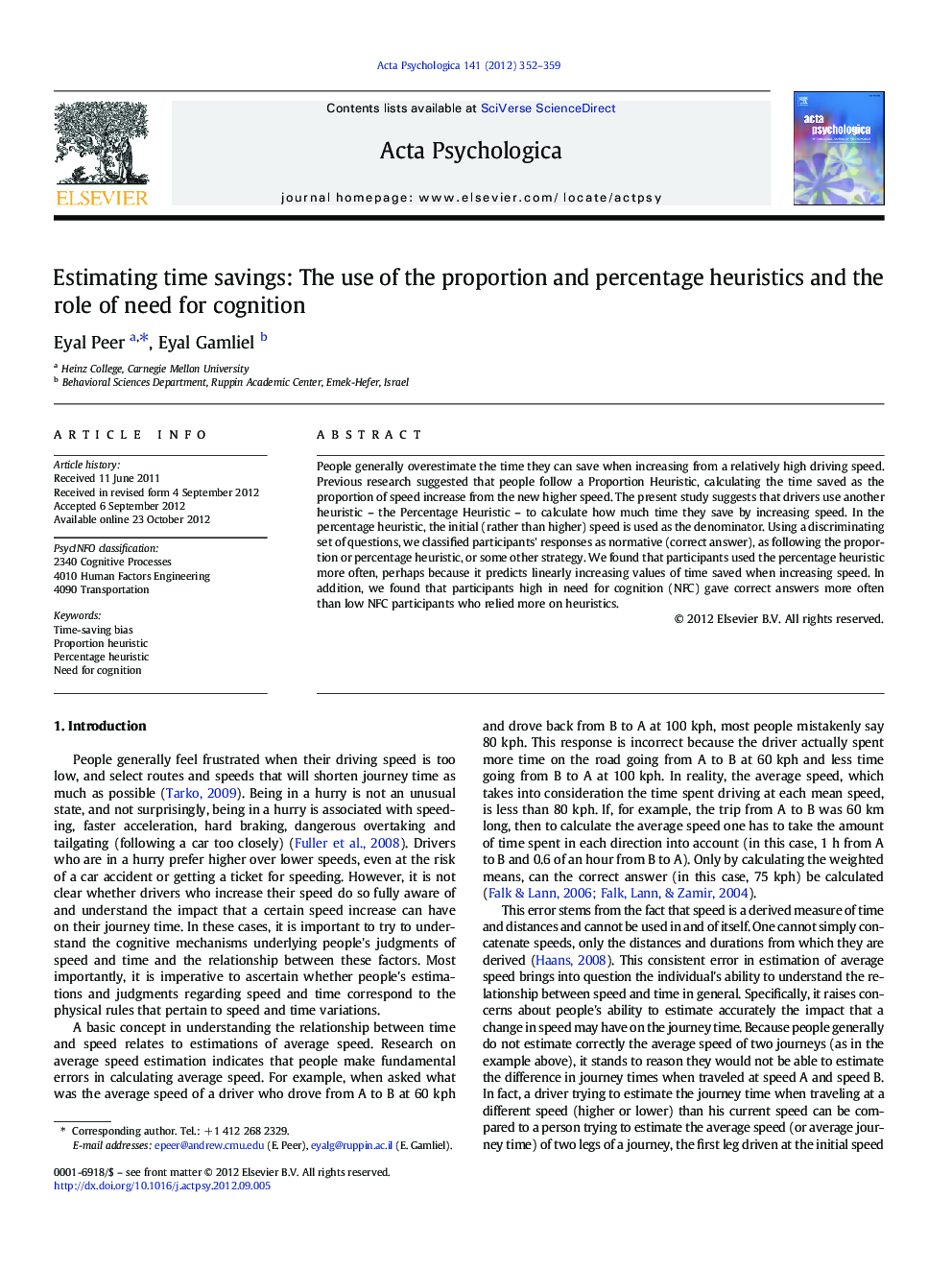| Article ID | Journal | Published Year | Pages | File Type |
|---|---|---|---|---|
| 919958 | Acta Psychologica | 2012 | 8 Pages |
People generally overestimate the time they can save when increasing from a relatively high driving speed. Previous research suggested that people follow a Proportion Heuristic, calculating the time saved as the proportion of speed increase from the new higher speed. The present study suggests that drivers use another heuristic – the Percentage Heuristic – to calculate how much time they save by increasing speed. In the percentage heuristic, the initial (rather than higher) speed is used as the denominator. Using a discriminating set of questions, we classified participants' responses as normative (correct answer), as following the proportion or percentage heuristic, or some other strategy. We found that participants used the percentage heuristic more often, perhaps because it predicts linearly increasing values of time saved when increasing speed. In addition, we found that participants high in need for cognition (NFC) gave correct answers more often than low NFC participants who relied more on heuristics.
► Examined people’s estimations of time savings when increasing speed. ► Most people rely on time savings heuristics rather than the normative model. ► The Percentage Heuristic was more often used than the Proportion Heuristic. ► High NFC participants followed normative model more than low NFC participants. ► Heuristics users also overestimated the speed for completing the journey on time.
